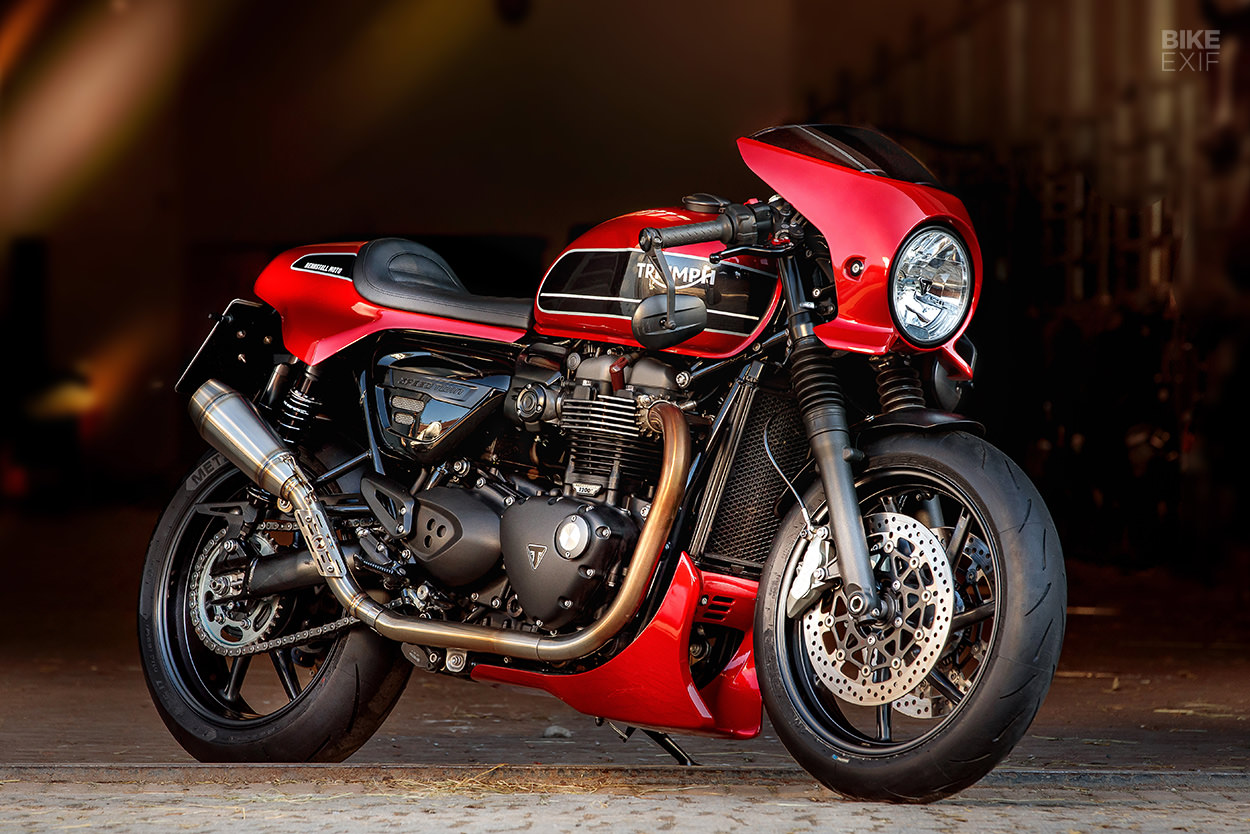
The alt-moto scene is full of enthusiasts that have a measure of good taste, but don’t have the means to build or commission a full-bore custom. So for every top-shelf bike you see here, there’s dozens on the street running a smattering of similar mods—often purchased and installed incrementally.
Because of this, some custom builders have had the good business sense to develop bolt-on kits for particular makes and models. And those kits are even better when they’re made of parts that can be purchased and installed piecemeal, rather than in one big hit.
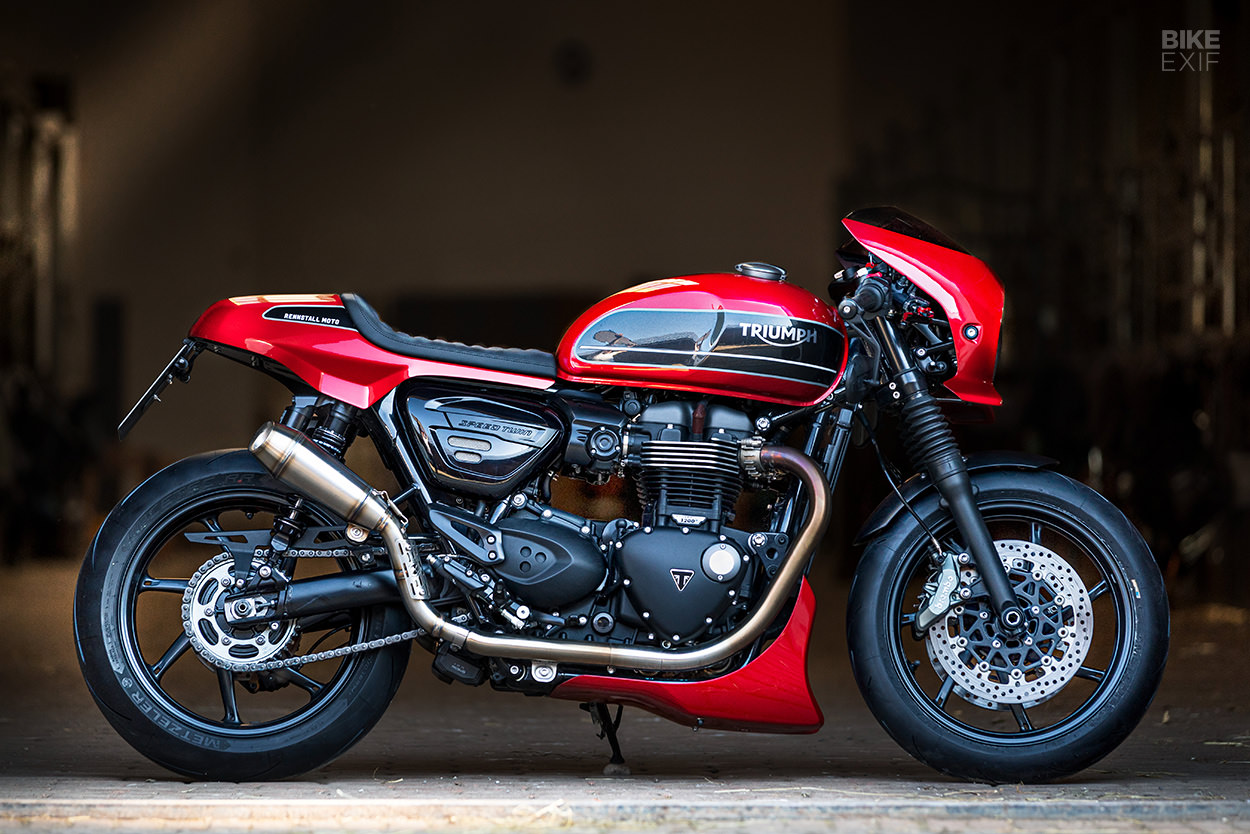
We’ve already seen great examples from Bike EXIF alumni, like Hookie Co. and Bad Winners. And now the German outfit Rennstall Moto has joined the party, with this razor-sharp package for Triumph’s 1200 cc Speed Twin. It gives the already good-looking and capable roadster just the right amount of racer style, and hangs together so well that it feels almost factory.
Rennstall Moto is a collaboration between Philipp Ludwig of Kraftstoffschmiede, and Krzysztof ‘Kris’ Szews from Man & the Machines. The first time they teamed up, they built an outrageous BMW R 1250 RS to compete in the Sultans of Sprint race series. But this time around, they had something more practical in mind.

“The Speed Twin has huge potential in terms of customizing,” says Kris. “It’s a very nice blank canvas since it’s neutral; not too classic, not too modern, just perfect for adding tons of character in whichever direction. A modern retro cafe racer is what struck us as the most fitting character, without being as expensive, extreme and ergonomically compromised as a Thruxton.”
The kit’s main pieces are a fairing, tail section and belly pan, with a small assortment of less obvious bits to complement them. Kris and Phil worked with their partners, Muniq Design, to first 3D-scan their test mule, before designing and engineering their ideas digitally.
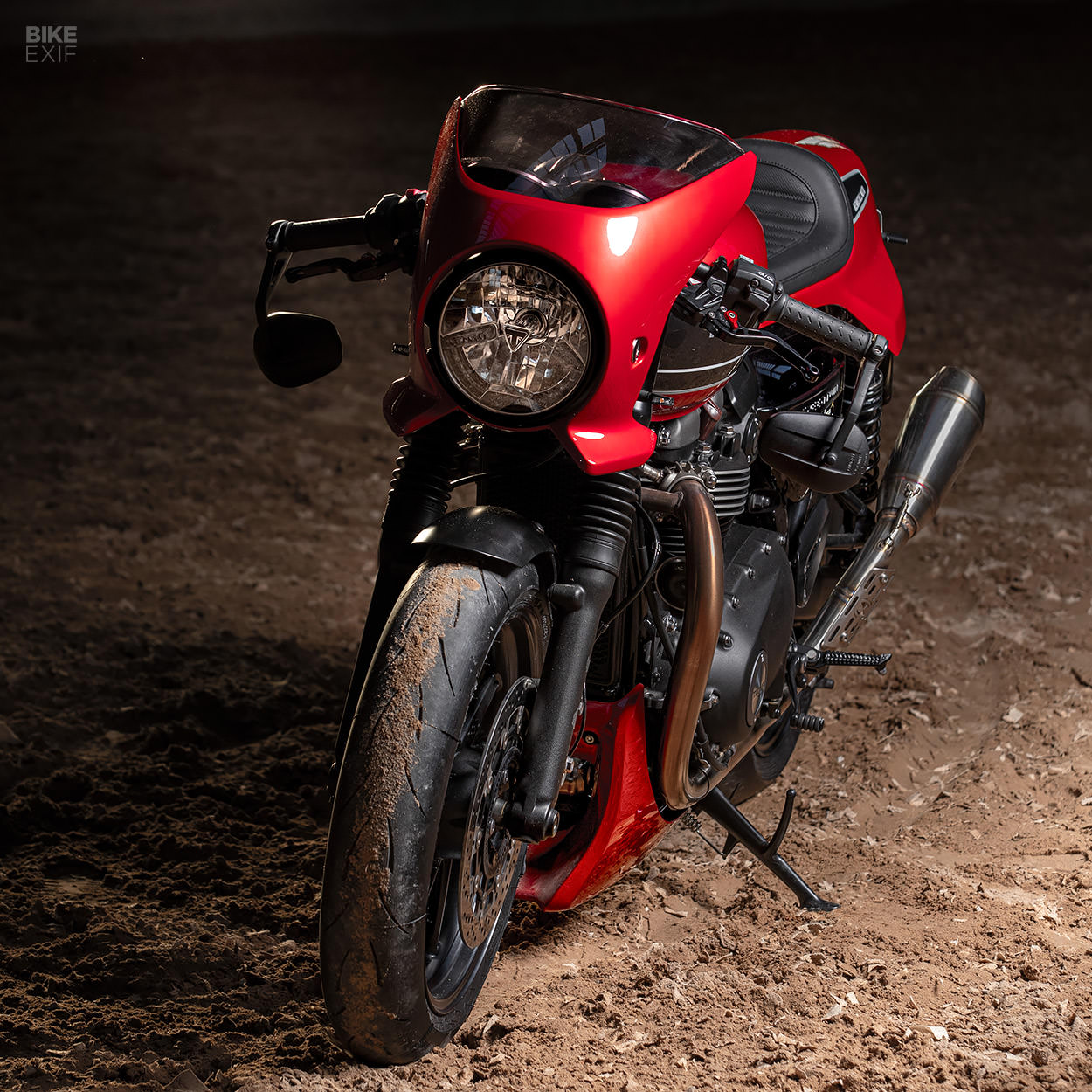
This 2019-model Speed Twin actually wears 3D printed prototype parts, made by a company called Creabis. The final parts will be produced in fiberglass at first, but the guys will be looking into carbon fiber options too, later on.
“When we started developing the parts,” explains Kris, “we already had series production in mind. So straight away we carefully designed and engineered everything for a variety of possible manufacturing techniques, so we wouldn’t be limited later.”
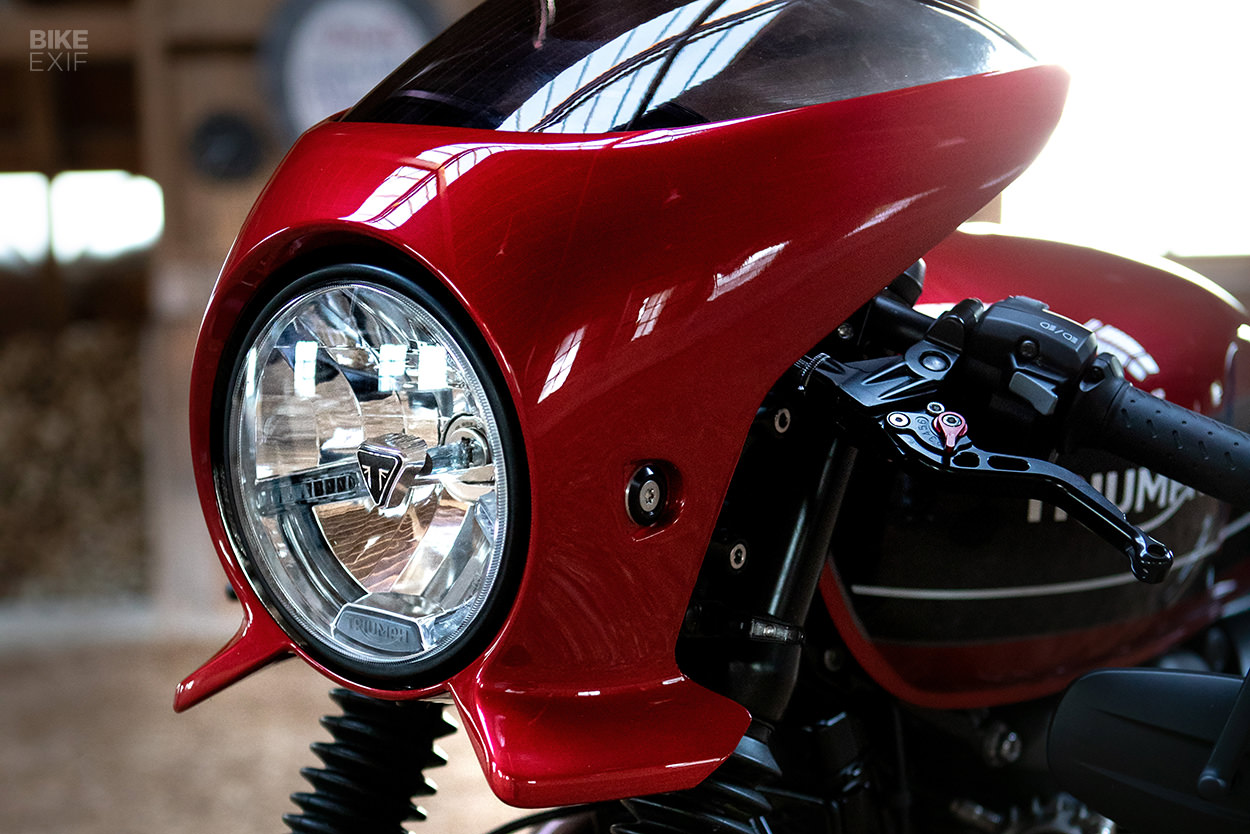
The fairing has a deliberate sharp, downwardly angled ‘shark nose’ vibe, to counteract the OEM front-end’s more upright arrangement. The prototype part’s windshield was actually CNC-milled from a clear block of acrylic, before getting a UV-protective coating and a tint.
Rennstall were adamant that the kit needed to be fully modular, and that each piece should be able to work independently. So the fairing can fit with the stock headlight and handlebar—but here, it’s been setup lower. The rig uses modified headlight brackets, carbon spacers to drop the clocks, and clip-ons that can also accept the stock switches and heated grips (all of which will be available).
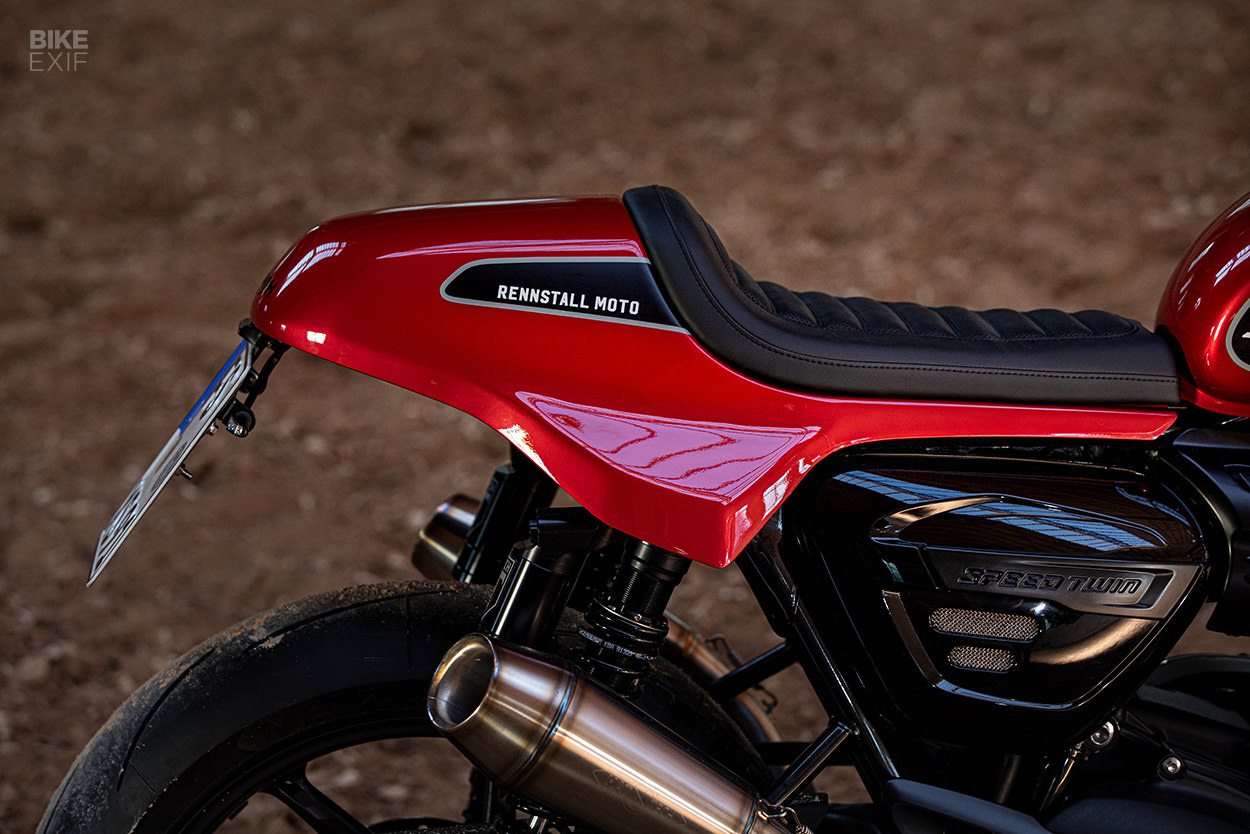
The tail section’s design is a cross between cafe racer and retro sportbike. It interfaces neatly with the Speed Twin’s OEM side covers, and includes side wings to cover up the upper shock mounts, for an overall cleaner effect. And it sits on a laser-cut aluminum plate, with milled mounting components that let you attach it like a factory seat: slide it forward, and bolt it down at the back.
The seat pad itself is removable too, and features custom upholstery with some really classy perforated sections. Rennstall installed a ‘Heck Weck’ tail tidy kit and some Rizoma bits from Classicbike Raisch out back, but it’ll work just as well with the stock kit (even the fender).
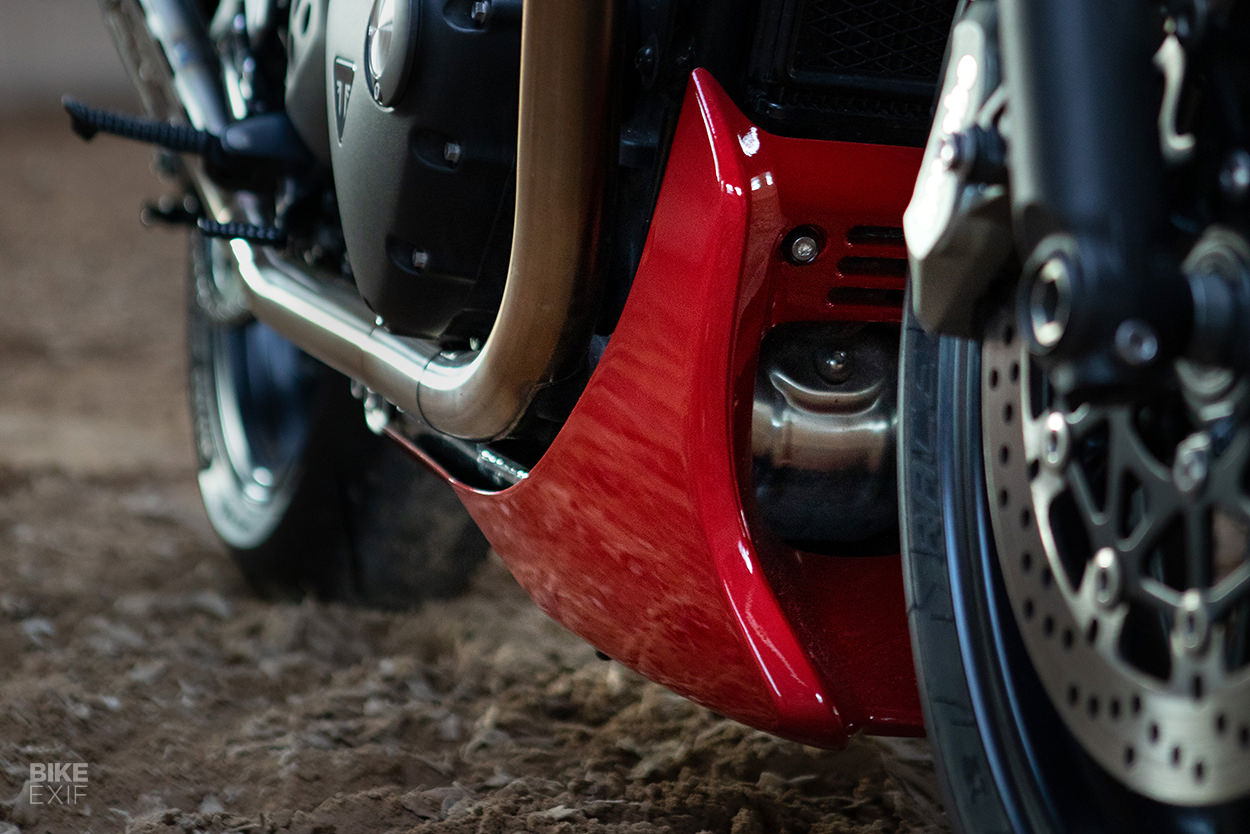
Lower down, the Speed Twin’s belly pan echoes the lines of the other parts perfectly, and adds an extra dose of track day styling. It mounts to the frame and radiator using another laser-cut aluminum part, and includes an air inlet and cooling slits, to maintain airflow to the important bits.
There’s ultimately nothing here that requires any special frame mods to install. Rennstall also plan to produce the kits in both raw versions, and painted options that match the Speed Twin’s stock color schemes—like the red livery shown here. And parts like the fairing and belly pan will also fit some of Triumph’s other modern classics.
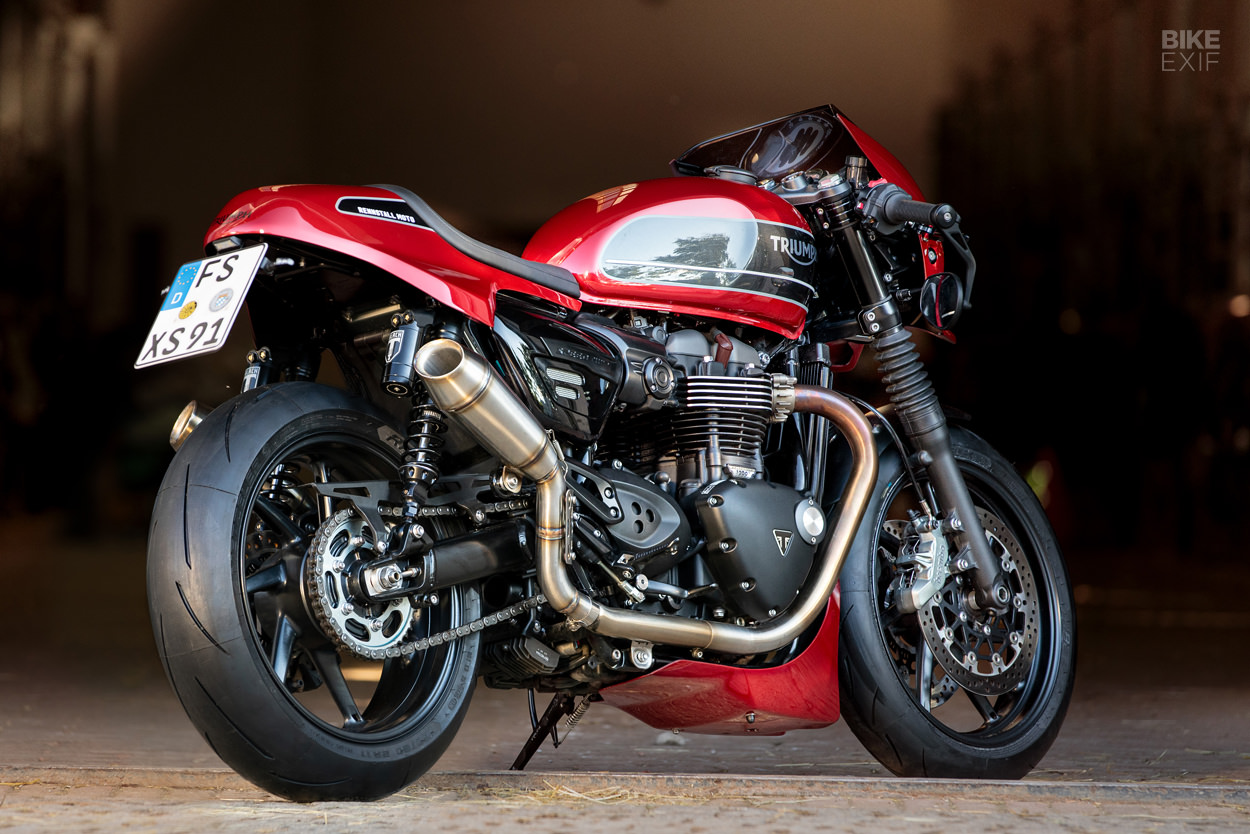
Other upgrades include rear shocks and front fork cartridges from Touratech’s new ‘Black T’ range, and a set of Metzeler Racetec RR tires for running the bike on the track. Exhaust specialists Hattech built a pair of upswept header extensions and mufflers, and plan to offer them as an off-the-shelf setup, complete with removable dB-killers. The rest of the build is finished off with a laundry list of blacked-out parts.
It took the guys six months to take the Speed Twin from final renders to working prototype. And although they had hoped the final parts would already be ready to sell, they’re optimistic about have them available by the end of the year.
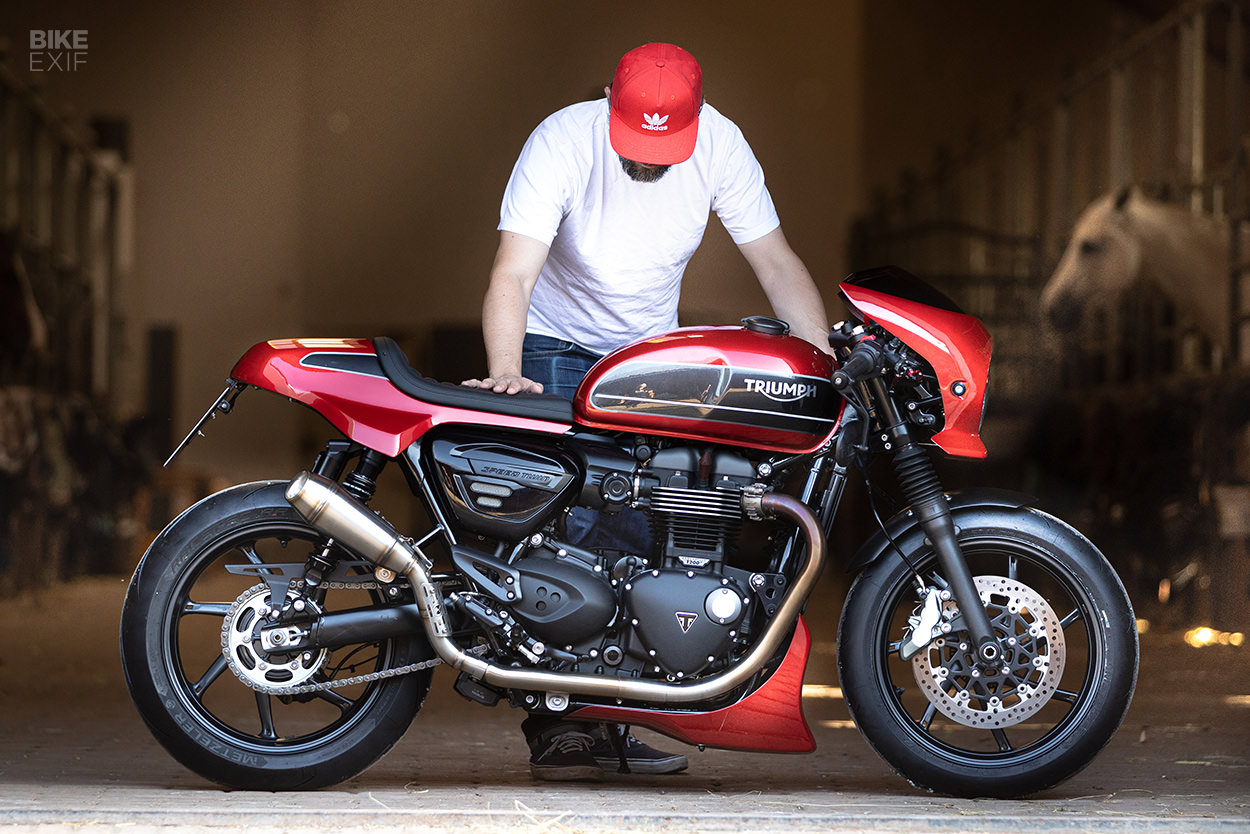
“It wasn’t easy to get this done in times of Corona,” says Kris. “Many web meetings, sending screenshots and sketches back and forth… all a bit long winded.”
Rennstall’s kit is both cohesive and aesthetically pleasing, and it’s got us pondering how we’d set it up, given the opportunity. We wish the boys luck in pushing this one over the finishing line.
Rennstall Moto | Instagram | Images by Marco Lindenbeck, track photo by MO Magazine
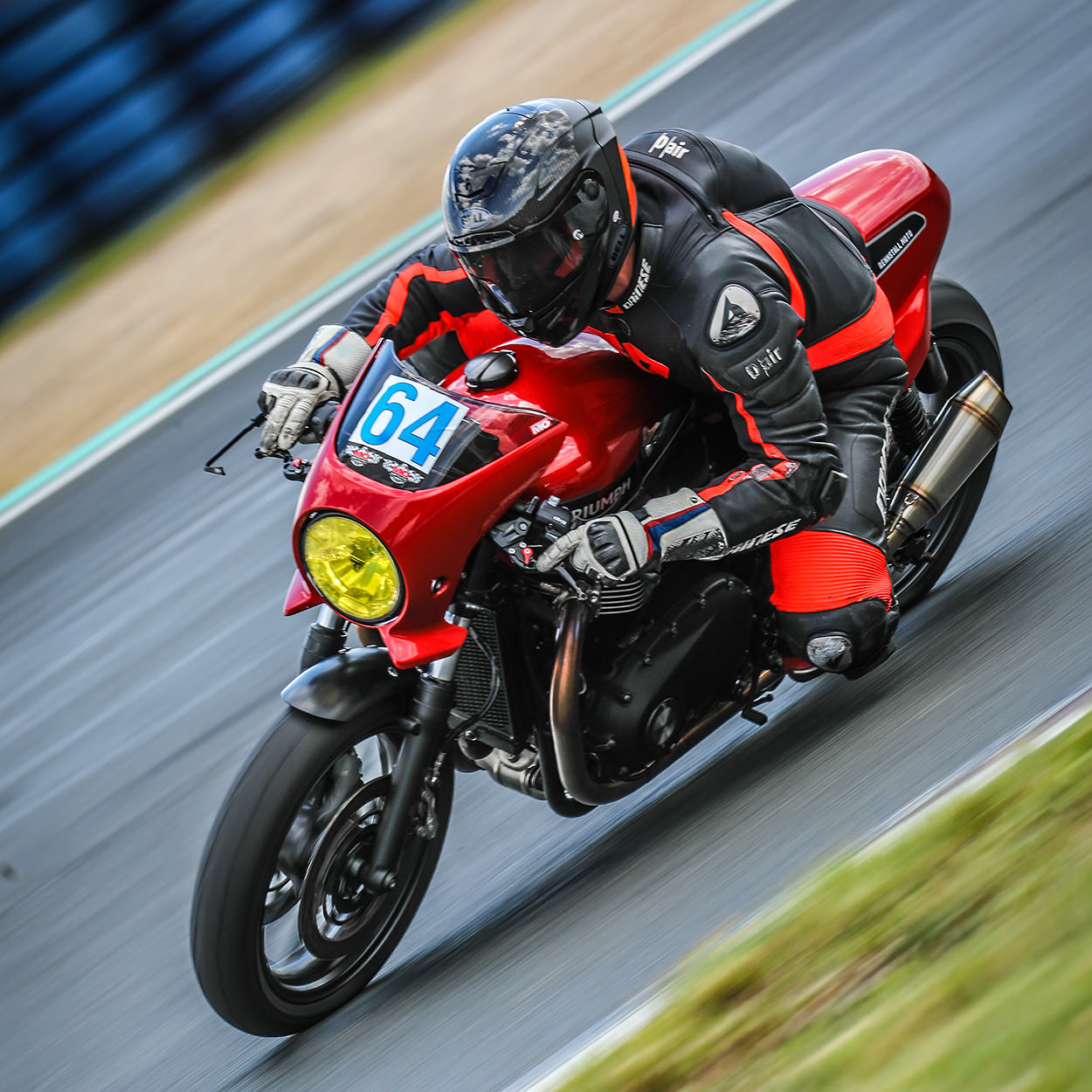
from Bike EXIF https://ift.tt/3lBJe8E
No comments:
Post a Comment